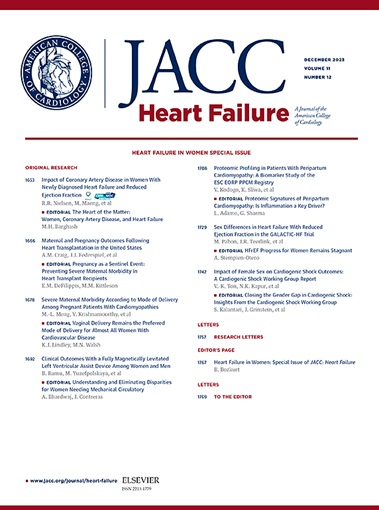心脏手术后血管截瘫综合征
IF 10.3
1区 医学
Q1 CARDIAC & CARDIOVASCULAR SYSTEMS
引用次数: 0
摘要
血管截瘫综合征是一种特殊形式的血管扩张性休克,常见于心脏手术患者,最常见的是体外循环,其特征是在组织灌注异常的心输出量正常或增加的情况下出现严重低血压。虽然已经确定了许多危险因素,但病理生理学仍然不完全清楚,治疗策略有限,预后不良。目前对机制和治疗的研究主要集中在针对导致深度低血压和终末器官灌注不良的血管舒张和血管收缩生物介质的不平衡。发病率和死亡率高,使血管截瘫综合征的临床领域未得到满足的需求。展望未来,使用标准化的定义和前瞻性结果的报告以及对新机制的研究对于确定新的治疗靶点和减轻血管截瘫综合征的负担至关重要。本文章由计算机程序翻译,如有差异,请以英文原文为准。
Vasoplegia Syndrome After Cardiac Surgery
Vasoplegia syndrome is a specific form of vasodilatory shock encountered in patients who undergo cardiac surgery, most commonly with cardiopulmonary bypass, which is characterized by severe hypotension in the presence of normal or increased cardiac output with abnormal tissue perfusion. Although numerous risk factors have been identified, the pathophysiology remains incompletely understood, and the therapeutic strategies are limited with a consequent poor prognosis. Current research on mechanisms and treatment has focused on targeting disequilibrium in the biological mediators of vasodilation and vasoconstriction that leads to profound hypotension and end-organ malperfusion. The morbidity and mortality rates are high, making vasoplegia syndrome a clinical area of unmet need. Looking ahead, use of standardized definitions and reporting of prospective outcomes as well as investigations into new mechanisms will be critical to identifying novel therapeutic targets and reducing the burden of vasoplegia syndrome.
求助全文
通过发布文献求助,成功后即可免费获取论文全文。
去求助
来源期刊

JACC. Heart failure
CARDIAC & CARDIOVASCULAR SYSTEMS-
CiteScore
21.20
自引率
2.30%
发文量
164
期刊介绍:
JACC: Heart Failure publishes crucial findings on the pathophysiology, diagnosis, treatment, and care of heart failure patients. The goal is to enhance understanding through timely scientific communication on disease, clinical trials, outcomes, and therapeutic advances. The Journal fosters interdisciplinary connections with neuroscience, pulmonary medicine, nephrology, electrophysiology, and surgery related to heart failure. It also covers articles on pharmacogenetics, biomarkers, and metabolomics.
 求助内容:
求助内容: 应助结果提醒方式:
应助结果提醒方式:


